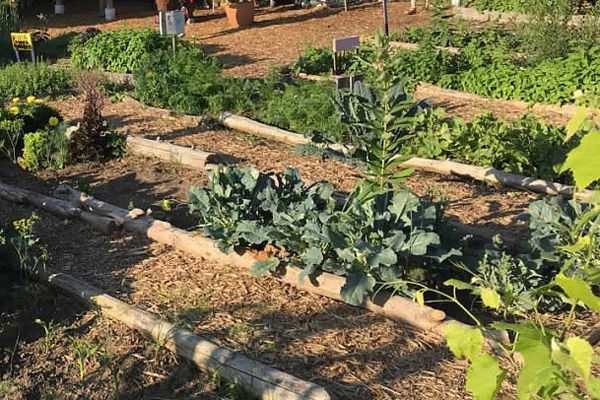City Blooming for Dummies
Fascinated in expanding food offer for sale in the City of Chicago? Believing about beginning an area yard? Modifications to the Chicago Zoning Ordinance enable agricultural usages like area yards and metropolitan farms in numerous parts of the city. Below is a checklist of often asked inquiries pertaining to the regulations and policies that growers must think about when intending an urban agriculture job.
The zoning change does not change any kind of other codes handling composting, building authorizations, acquiring or leasing City owned residential property, business licenses or environmental contamination. There are existing codes that control these problems and they continue to be in complete effect and may apply to your project. Community gardens are usually possessed or handled by public entities, public companies or community-based companies and maintained by volunteers.
Urban farms expand food that is meant to be sold, either on a not-for-profit or for-profit basis. As a result of their commercial objective, metropolitan ranches require a company certificate. Yes. A neighborhood garden is enabled to offer surplus produce that was expanded on website if the sales are accessory or secondary to the garden's main purpose defined over.
An Unbiased View of City Blooming
Composting is allowed but just for plant material that is generated and used on site. The quantity of garden compost product can not surpass 25 cubic lawns at any type of given time according to the standards in 7-28-715 of the City's Municipal Code. Yes. Because the dirt at the majority of brand-new garden websites needs modifying, compost, dirt, timber chips, or various other materials can be obtained to build or enhance the growing space - eco-friendly practices.

If a structure license is called for after that the hoophouse will certainly be considered an accessory structure. You can figure out even more regarding the building permit demands by getting in touch with the Division of Structures. The 25,000-square-foot size restriction is planned to stop a solitary area garden from controling an offered block or diminishing the block's existing household or business character.
The limit does not relate to yards found in Public Open Space (POS) areas. Can there be more than one community yard that is 25,000 square feet on a solitary block? Yes. The dimension limit relates to private gardens, not to specific blocks. No. Fence is not required, nonetheless, gardens that have huge parking lot might be required to mount fence or various other landscaping features.
Some Known Questions About City Blooming.
B1 & B2 areas call for that all commercial use activities be carried out inside. R districts limit commercial activity. The policies reflect the purpose and intent of the Zoning Code. Is fence needed for metropolitan ranches? Yes. Fences may be needed, in addition to landscape design and testing, for particular parking lot and outside work or storage areas depending on location and the specific activity taking location.
Urban farms need structure licenses and zoning approvals prior to building and construction (urban gardening). Various other types of city evaluation might be needed depending on particular structures, activities, dimension, landscape design, licensing, public health and stormwater monitoring concerns.
The Division of Service Affairs and Consumer Defense can help figure out the specific kind of company certificate that's needed. Off street vehicle parking is required for a lot of commercial tasks in Chicago. The required number of auto parking rooms is based on the number of employees working on site and not the square footage of the growing space.
Top Guidelines Of City Blooming

Yes. A metropolitan farm can offer garden compost material produced on site, nevertheless, the procedure should adhere to the policies in 7-28-715 of the Chicago Municipal Code. Yes. Aquaponic systems are permitted inside your home on city ranches in lots of zoning areas. A zoning evaluation and structure authorization is called for in order to install frameworks or systems and a service permit is needed as explained over.
Up to five hives or colonies of honey bees might be kept as an accessory use. Beekeepers should sign up with the Illinois Division of Farming. For additional information regarding the recommended zoning change you might get in touch with the Department of Real Estate and Economic Advancement, Bureau of Planning and Zoning at 312.744.8563.
Farming in cities and city locations A metropolitan ranch in Chicago. Urban agriculture describes various techniques of cultivating. https://cityblooming3.wordpress.com/2024/06/27/city-gardening-cultivating-green-spaces-in-urban-jungles/, handling, and distributing food in metropolitan locations. The term additionally applies to the location activities of pet husbandry, aquaculture, beekeeping, and gardening in a metropolitan context. Urban agriculture is differentiated from peri-urban farming, which happens in rural areas at the edge of suburban areas.
A Biased View of City Blooming
, who seek to develop social networks started on a common principles of nature and community holism. These networks can develop by method of formal institutional support, coming to be integrated right into regional town planning as a "change community" movement for lasting city growth.
Some of the first proof of metropolitan agriculture comes from Mesopotamia.
Comments on “Getting My City Blooming To Work”